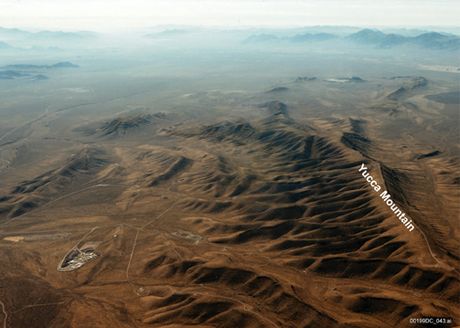This is the third part of our three part series on the nuclear fuel cycle. To read the first part on mining, converting, enriching and fabricating nuclear fuel, click here, and to read the second part on the fuel in the reactor core, click here.
Part 3
Once the used nuclear fuel is removed from the reactor core, it’s stored at the nuclear plant site through two different methods: used fuel pools and dry casks. The used fuel pools and dry cask storage systems are regulated by the Nuclear Regulatory Commission (NRC) and have numerous and redundant safety systems in place to carefully protect the fuel.
Duke Energy has almost 40 years of experience managing nuclear fuel and safely stores used fuel at its nuclear stations in both used fuel pools and above ground dry storage systems.

Used Fuel Pools Storage
Used fuel pools are enclosed, steel-lined concrete pools filled with water. Used fuel is stored under about 20 feet of borated water, which provides cooling for the used fuel while the fuel undergoes radioactive decay. The water acts as a natural barrier for radiation from the used nuclear fuel, protecting workers and the environment.
Dry Cask Storage
The NRC requires used nuclear fuel to be cooled in the fuel pools for at least six years before being transferred to on-site dry storage where the used fuel is placed in rugged, air-tight, steel casks or reinforced concrete containers with sealed, steel inner canisters.
An advantage of dry storage systems is their passive cooling system design, which relies on natural convection and circulation to cool the fuel rather than requiring mechanical devices or a power source. These massive storage systems are continuously monitored and every 20 years, they must be relicensed by the NRC.
Permanent Disposal of Used Nuclear Fuel
The federal government has ultimate responsibility for managing the permanent disposal of used nuclear fue under the Waste Policy Act enacted by Congress in 1984l.

After decades of extensive research and analysis, the Department of Energy determined Yucca Mountain as the nation’s ideal permanent geologic repository site for used nuclear fuel and high-level radioactive waste. Yucca Mountain, located in Nevada’s Mojave Desert about 100 miles northwest of Las Vegas, was chosen due to its remote, arid and geologically stable conditions. At Yucca Mountain, nuclear materials would be stored about 1,000 feet underground and about 1,000 feet above the closest ground water. In 2002, President Bush and Congress approved Yucca Mountain as the nation’s permanent geologic repository site; however, the project is currently stalled politically.
President Obama appointed the Blue Ribbon Commission in January 2010 to re-evaluate used fuel storage. In its draft recommendations, the Blue Ribbon Commission endorsed the need to establish a geologic repository. In addition, the commission recommended moving expeditiously to develop one or more consolidated, centralized interim storage facilities that will enable the government to begin removing used fuel from nuclear sites. Furthermore, the commission proposed governance and financing changes that would help the government carry out its used fuel management responsibilities. Duke Energy endorses these draft recommendations and supports the government’s efforts to fulfill its obligation to accept and manage used nuclear fuel. The final Blue Ribbon Commission recommendations are scheduled for publication in January 2012.
Reprocessing (Recycling) Used Nuclear Fuel
To significantly reduce the volume of materials requiring deep geologic permanent disposal and provide another supply chain for nuclear fuel, used nuclear fuel can undergo reprocessing, a method of chemically separating fuel parts after the fuel is removed from the reactor.
Used fuel pellets consist of about 96 percent uranium, 3 percent fission products and 1 percent plutonium and other heavy metals. The recovered plutonium may be used in mixed-oxide (MOX) fuel assemblies as a substitute for enriched uranium. The fission products are waste materials, but the recovered uranium can be re-enriched and used as reactor fuel.
Used nuclear fuel recycling technology does exist. A number of counties, including France, United Kingdom and Russia, have successfully used recycling to reduce waste volume and content for many years.
Even with the possibility of commercial nuclear fuel recycling, the U.S. government must still provide a permanent disposal facility, as recycling does not eliminate all used fuel components.
Until a permanent national repository or recycling option is available, utilities will continue to safely and securely store used fuel at nuclear stations. Duke Energy’s McGuire, Catawba and Oconee nuclear stations have enough storage capacity for their used fuel for the duration of each plant’s operating license.
Further Reading:
- Storage of Used Nuclear Fuel (Nuclear Energy Institute)
- Storage of Spent Nuclear Fuel (Nuclear Regulatory Commission)
- Blue Ribbon Commission Website
- Processing of Used Nuclear Fuel (World Nuclear Association)


